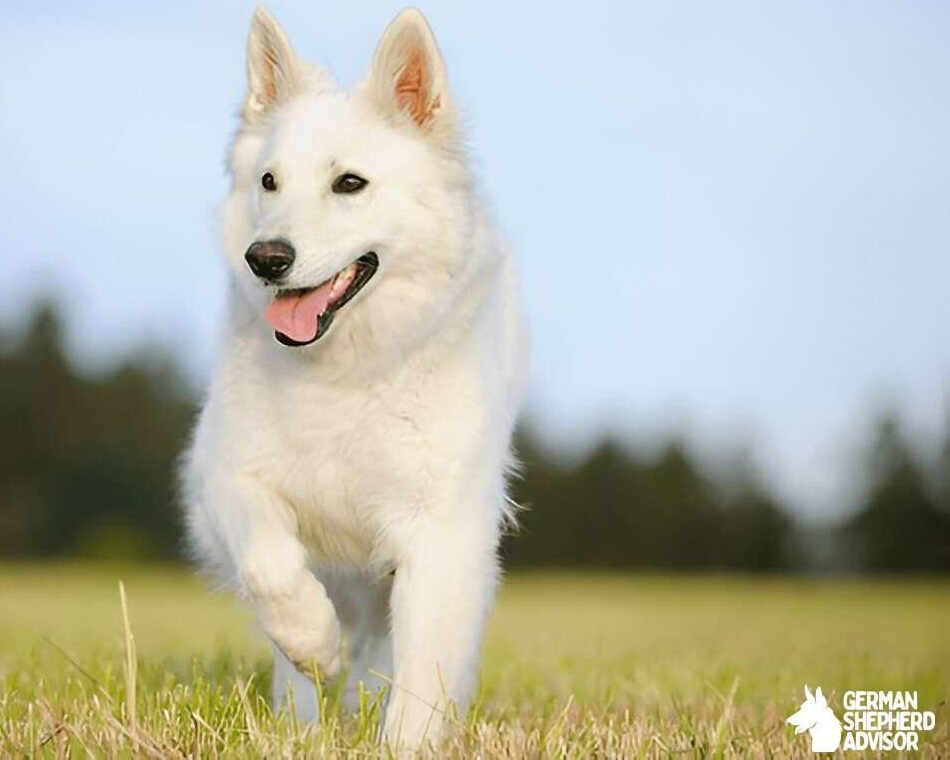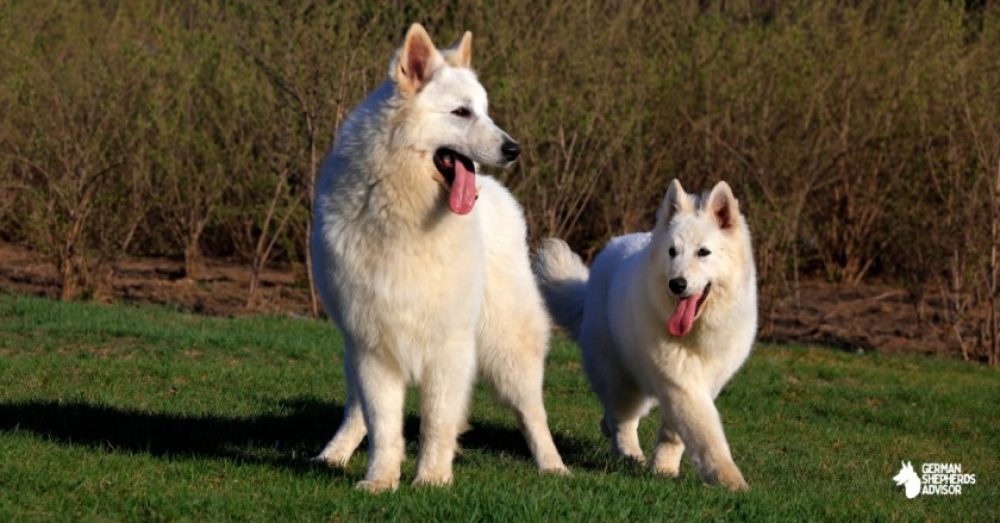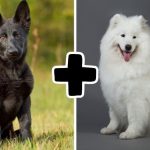The Berger Blanc Suisse breed was developed in Switzerland beginning in the 1970s from white-coated German Shepherds imported from North America, and it was officially recognized as a distinct breed by the Swiss Kennel Club in 1991. The Berger Blanc Suisse, also known as the White Swiss Shepherd (BBS), was officially recognized as a distinct breed by the Fédération Cynologique Internationale in 2011 (FCI). They are primarily companion and family dogs, though they also excel in obedience, agility, and therapy work.
The whites BBS can be recognized by their coats which must be white. They are intelligent, loyal with strong guarding instincts, but not aggressive with people outside the family. German shepherds are one of the most common breeds of dogs in the world, and there is no precise estimate of how many pure-bred German shepherds there are. White coat doesn’t mean albino; BBS is not just a white GSD colour variant. BBS is a separate breed.
History the Berger Blanc Suisse
The German Shepherd and the White Swiss Shepherd, often called the Berger Blanc Suisse, are related. White Shepherds were an acceptable variety within the breed since the recessive gene for a fully white coat was present in German Shepherd lines from the start. White Shepherds were systematically removed from European breeding programs in 1933 under Nazi rule because they were seen to be a genetic defect. They said the white gene caused albinism-related coat fading and genetic abnormalities. Unlike albinism, which is a loss of pigmentation linked to skin disorders, blindness, deafness, and other health concerns, the recessive gene that gives shepherds an all-white coat is really a masking gene that covers other colors.
Soon after, the AKC did the same. White Shepherds were completely excluded from the conformation ring in 1968 after the AKC approved the solely colored breed standard in 1959. In an effort to conserve the White Shepherd, breed advocates in the USA established White Shepherd organizations and breeding programs as a result of the general decline caused by an increasingly negative attitude toward these dogs. White Swiss Shepherd of today originated from American White Shepherds that were exported to Europe.
The White Swiss Shepherd received official recognition as a separate breed in Switzerland in 1991. The White Shepherd was once again welcomed back into the conformation ring in the USA when the UKC formally acknowledged them in 1999. The FCI and all affiliated kennel clubs worldwide formally recognized the WSS in 2011.
Health and Lifespan
BBS dogs are known for their intelligence, loyalty, and protectiveness of their family. They make an excellent companion for a variety of lifestyles. However, they can be affected by a number of health issues that require attention from the owner. The most common health problems are hip dysplasia, elbow dysplasia, cancer, bloat syndrome and heart disease. These diseases can cause the dog to lose weight or have trouble moving around because of the pain they experience. Other possible genetic concerns include degenerative myelopathy (DM) and MDR1 gene mutation, both seen in herding breeds. Responsible breeders screen for hip and elbow dysplasia and other hereditary issues. They are known to live up to 12-14 years which is long compared to other breeds of dogs.
Training and Exercise
Training your White Swiss Shepherd is very important. It should not only focus on teaching the dog commands but also training it to behave properly at home and in public. As a working/herding type breed, BBS requires daily physical exercise (e.g., 1-2 hours) and mental stimulation (training, games, tasks). Without it, they may become bored. Early socialization of your BBS is important with children and other pets at home. Positive reinforcement and consistency work best for this intelligent breed.
Appearance and Physical Traits

The White Swiss Shepherd is a large breed dog and it has an average weight of Male, 66–90 pounds (30–41 kg) and Female, 55–77 pounds (25–35 kg), and male height 58–66 cm (approx 22.8–26″) and female 53–61 cm (20.8–24″). A White Swiss Shepherd is one of the most popular breeds out there because they’re loyal companions, deeply devoted to their owners. They’re very good with children as well as other pets. According to the FCI standard, the breed has a medium to long, dense white coat with a well-furred tail and erect ears.
- This breed has a tough, compact, square build with a strong neck that is set high on the body.
- Their heads are also heavier than their necks and erect ears making them look like they have an air of superiority about them when they walk around with it held high.
Cost
How much does a White Swiss Shepherd puppy cost? White Swiss Shepherd puppies are bit costly because of their rare breed you can expect something around $1,200-$2,000 because of their unique color and attractive look they appeal to masses. Prices may vary by breeder reputation, location, and lineage. Always choose a reputable breeder who provides health certifications
Popularity
White Swiss Shepherds are a popular breed because of their intelligence, agility, and curiosity. They are versatile: herding, companion, service, and sometimes used in tracking/guarding roles. BBS dogs are sometimes employed in tracking or detection work. White Swiss Shepherds are usually good with other pets and children. BBS dogs are also used as search and rescue dogs because of their keen sense of smell. They have been used for many purposes over the years including guarding, herding sheep and cattle, guarding property, search-and-rescue activities and acting in canine movies.
Rarity
White Swiss Shepherds are considered rare among the canine breeds. A lot of people choose this dog because of its color and appearance. White Swiss Shepherds share the same temperament as standard German Shepherds. Some owners report that their white coats may make them slightly more sensitive to sunlight and heat, though this is anecdotal. The White Swiss Shepherd is a rare breed of dog. The white coat in some GSDs results from a recessive gene rather than albinism. True albinism is rare and associated with specific health issues. GSDs/White Swiss Shepherds have erect ears once matured (unless ears are cropped or a puppy). The rarity of this breed lead to many myths about their grooming and care. The truth though is that they take just as much care as any other dog.
Temperament and Personality
The White Swiss Shepherd is a large, strong and intelligent breed of working dog. A well-bred dog will alert its handler with a loud bark. It is not aggressive or dangerous unless it feels threatened or provoked. Their gentle temperament also makes them ideal as therapy and assistance dogs. They are alert and confident without being aggressive, and thrive when included as part of the family.
The German Shepherd has a loyal personality. They are eager to please their owners. They are often very sensitive to criticism and will not respond well if they feel they have done something wrong. The White Swiss Shepherds are great family pets because they are very loving and gentle with children.
- The White Swiss Shepherd’s main features are its strong work ethic, intelligence, and high energy level
- This breed has a tough, compact, square build with a strong neck that is set high on the body.
Shedding
Shedding is moderate year-round, with heavier shedding twice a year during seasonal coat changes. While it is true that all breeds of German Shepherds shed. Double coat sheds seasonally (two “blows” per year) though moderate all year; brushing weekly, more during heavy shed. White coat may show dirt more easily, so coat maintenance (spot cleaning) is useful.
Are they Aggressive?
White Swiss Shepherds are often stereotyped as being violent or aggressive because of their association with the police force. However, this is not always true. Individual dogs can vary from highly obedient to more independent, depending on their lineage and upbringing.
Diet and Nutrition
When it comes to feeding your German shepherd, there are several things to consider. First you should consider the age of your dog. Older dogs will need more calories than young puppies. If you’re not sure what type of diet to feed your dog, talk with your veterinarian for advice and assistance.
The first thing to note is that they are prone to gaining weight if their calories are not restricted. A white swiss shepherd needs calorie depend heavily on size/age/activity, puppies usually need more calories per pound. Consult your vet, feed on activity & age basis; many adult large GSDs may need 2,000+ kcal, but this varies widely.
Choose a high-quality kibble that contains around 20–25% protein and 10–15% fat, along with fiber (wheat bran, rice bran), vegetables (carrots, peas), some type protein (chicken by-product meal, meat and bone meal), and essential vitamins and minerals. Consult your vet for exact portions based on age, weight, and activity. The best time to feed your White Swiss Shepherd is in the morning.
The following are some feeding tips for White Swiss Shepherds:
- Look for a food that is appropriate for the age of your dog.
- Talk with a vet about what type of diet to feed your dog.
A common question that many people who are getting a new White Swiss Shepherd puppy ask is how much should they feed them. The answer to this question will depend on the age, size, and activity level of the dog. As well as how much other food your dog consumes.
Grooming of White Swiss Shepherds
White Swiss Shepherds are often groomed to keep their coats clean and healthy. With the right tools, grooming is a relatively easy task that can help your dog live a healthy life. One of the best ways to groom your dog is to brush him on a daily basis. It will help distribute natural oils throughout the coat, reduce shedding, and get rid of tangles in the fur.
Grooming is a process that will help keep your pet healthy and happy, not only by removing any excess hair, but also by maintaining its hygiene. The following tips will help you keep your White Swiss Shepherd looking healthy and beautiful.
– White Swiss Shepherds should only be bathed as needed. Bathing too often can cause their coat to become dry and dull. Bathing should be done only after the dog has been running around in hot weather or if he/she has been rolling around in something smelly, such as animal droppings or tar from a road surface.
– Brush your dog’s teeth at least twice a week to avoid bad breath and gum disease. This will also help prevent cavities from forming on their teeth as a result of the bacteria that builds up inside their mouth.
The White Swiss Shepherd has a medium to long double coat that sheds year-round. A White Swiss shepherd is a smart and active breed.
- White Swiss Shepherds are not hypoallergenic dogs, so they do not make good pets for people with dog allergies.
- You need to brush the hair every day or every other day, depending on the thickness of the fur.
- In order to keep it from knotting up, you need to comb it as well.
FAQs
No. While they share ancestry, the BBS is a separately recognized breed with its own FCI standard.
No. They are calm and social when properly trained and socialized.
Yes. Daily exercise and mental challenges are essential for their well-being.
Conclusion
This article has covered many aspects of the white Swiss Shepherd. We hope you have found it helpful. If you have a spacious home and time to dedicate to an active companion, consider adopting a White Swiss Shepherd — they’re loyal, intelligent, and incredibly loving dogs!







